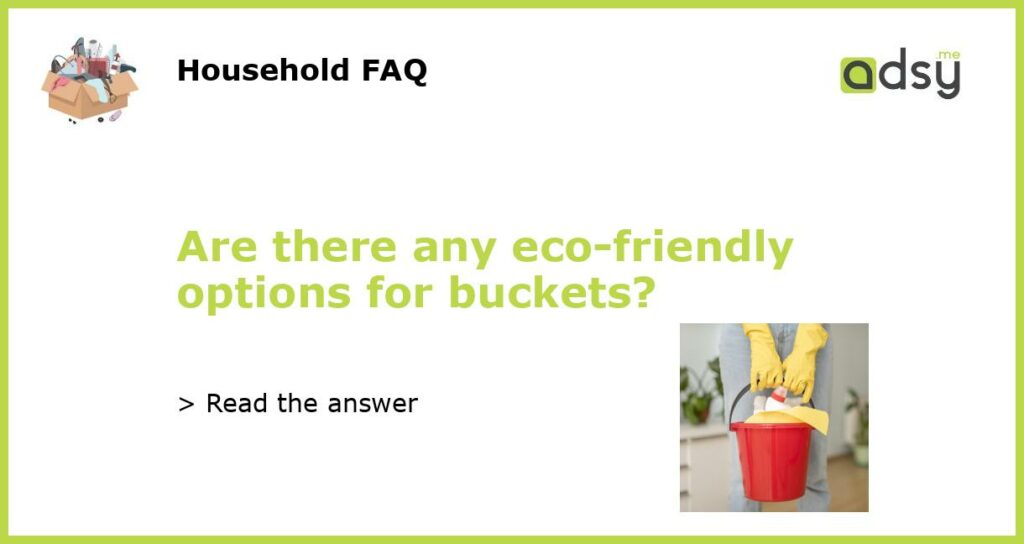The rise of eco-friendly alternatives
With the increasing focus on sustainability and environmental consciousness, the market has seen a rise in eco-friendly alternatives for various everyday items. This includes a range of products, from household goods to packaging materials. One such product that has gained attention is eco-friendly buckets.
Biodegradable and compostable materials
Traditional buckets are typically made from non-biodegradable plastics such as polypropylene or polyethylene. These materials take hundreds of years to decompose, contributing to the ever-growing problem of plastic pollution. However, eco-friendly buckets are made from biodegradable or compostable materials that break down naturally over time.
For example, some eco-friendly buckets are made from plant-based plastics, which are derived from renewable resources such as corn starch or sugarcane. These materials have a much lower environmental impact compared to conventional plastics, as they require less energy and emit fewer greenhouse gases during production.
Recycled plastic options
In addition to biodegradable materials, eco-friendly buckets can also be made from recycled plastic. This involves using post-consumer or post-industrial plastic waste as raw materials for bucket production. By diverting plastic waste from landfills and incineration, recycled plastic buckets help reduce the overall environmental footprint of the product.
Recycled plastic buckets are available in various forms, including those made from 100% recycled plastic or a combination of virgin and recycled plastic. These buckets maintain the same functionality and durability as their non-recycled counterparts while reducing the need for new plastic production.
Sustainable manufacturing processes
Aside from the materials used, the manufacturing processes of eco-friendly buckets also contribute to their sustainability. Many manufacturers of eco-friendly buckets employ energy-efficient and waste-reducing practices in their production facilities.
For instance, some manufacturers use renewable energy sources like solar or wind power to run their production lines, reducing reliance on fossil fuels. Additionally, efficient water management systems are put in place to minimize water usage and wastewater generation. These measures help conserve resources and reduce the environmental impact of bucket manufacturing.
Benefits of eco-friendly buckets
Choosing eco-friendly buckets offers several benefits for both individuals and the environment. Firstly, using biodegradable or compostable materials reduces the accumulation of plastic waste in landfills and oceans, helping to mitigate the negative impacts of plastic pollution.
Secondly, opting for recycled plastic buckets helps divert plastic waste from incineration, reducing greenhouse gas emissions and conserving resources. By supporting the circular economy, these buckets contribute to a more sustainable and resource-efficient future.
Lastly, the production of eco-friendly buckets often involves a smaller carbon footprint compared to conventional plastic buckets. This is due to the use of renewable materials, energy-efficient manufacturing processes, and reduced transportation requirements for recycled plastic.
Overall, choosing eco-friendly options for buckets is a step towards a more sustainable and environmentally conscious lifestyle. By incorporating these alternatives into our daily lives, we can contribute to the preservation of the planet for future generations.






